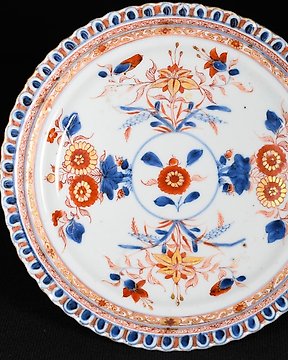
Raro plato pequeño de porcelana decorado con la paleta "Imari" y oro. - Porcelana - China - Kangxi (1662-1722)
N.º 82174885

N.º 82174885

A very nicely decorated Late Ming Blue and White Porcelain Dish with a landscape scene situated in two concentric circles with Ducks/Geese under a pine tree in a mountainious landscape with a pagode in the background. The moon at te sky. The border with butterflies and bordered by a circle. Tianqi or Chongzhen Period c.1620-1635. This is a mirroring plate that is partly undecorated as the white space should have an upside down decoration of something else. I have added two dishes with the other half painted as comparison.
Also some pictures of similar dishes in the books have been added.
These small Transitional porcelain saucer-shaped dishes would have been used for the Japanese tea ceremony meal, the Kaiseki, small dishes for serving food at the tea ceremony are the most commonly encountered form of Chinese export porcelain for Japan. Made in China for the Japanese. The subject is of two young Chinese boys walking in a garden, owith a flower in his hand. Very nice and unusual scene.
Kaiseki (懐石) or kaiseki-ryōri (懐石料理) is a traditional multi-course Japanese dinner. The term also refers to the collection of skills and techniques that allow the preparation of such meals and is analogous to Western haute cuisine. There are two kinds of traditional Japanese meal styles called kaiseki or kaiseki-ryōri.
Condition
Both dishes with some rimfritting/mushikui, nothing serious. 1 dish with firing flaw in centre. some sticker remaining at the base of 1 dish. Size 153x27mm DXH
Period
17th century Transitional (1620 - 1661)
Cómo comprar en Catawiki
1. Descubre algo especial
2. Haz la puja más alta
3. Paga de manera segura